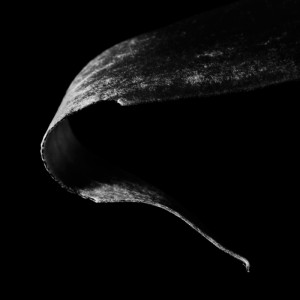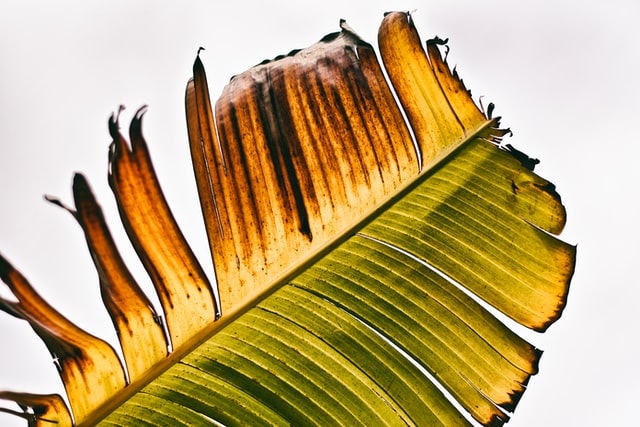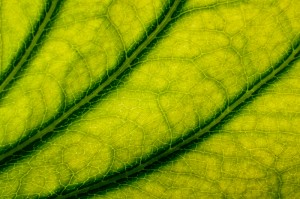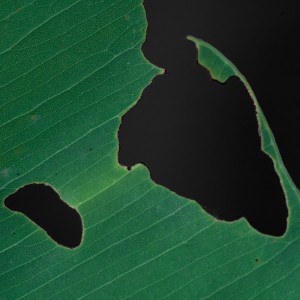This is a guest post by Tom Dinning who, besides being a professional photographer, teacher and mini-celebrity in the Light Stalking community, has also shared some very popular collections of leaves (among other things) in the forums and in other posts.
There are times when we don't see the forest for the trees, or in this case the leaves for the trees.

But if you step in just a little closer to observe the detail you will be rewarded with a splendor of shapes, forms, colours and textures that will keep your shutter finger so busy you won't have time to pick your nose.

Although you might be inclined to reach for the macro, stay with the mid-range for a while. Here you can study the singular form of a leaf or the patterns they form as they reach for the Sun.
Watch your feet! Leaves will cover the forest floor in an intricate array of foliage.

Watch for natural designs as each leaf extends and interlocks with the next.

Not all the leaves are still attached to trees. Those that have fallen to the ground can be just as interesting. Search the detritus for the textures of decay.


You don't need much preparation. A tripod might come in handy but it's not essential if there is plenty of light about. I seek out shrubs in the shadows. The soft light enables me to record detail in the mid-range of the tonal scale and avoid the burnt out highlights and black shadows.

If you think the colour is getting in the way, convert the image to B&W using the B&W adjustment layer in PS. Here you will be able to adjust the tones to suit your taste. It's not always good to be green. Sorry Kermit.

Flowers are nice but the leaves will stand alone as a thing of beauty. You can pick the flowers and take them home to your loved one. Tell the council I said so.
When you do get close you might need to consider how much wind is about. Any movement in those shadows will result in some blur. I prefer to take nature into hand; snip off the leave(s) and take them back home to the comfort of my ‘shed'. Here I can regulate the light (which will be provided through a window with a white sheet hung over it). I can also keep the air movement to a minimum down in the dungeon. The door is usually bolted closed (from the outside). A tripod will be essential here.

I'm more inclined to under-expose by a stop or two when I get close. I like the way the light illuminates the edge of the leaf and I want to render the shadows black. Its best to get this in the camera than fiddle with PS later. I think its a hang-over from the Zone System days. But if you're marginally obsessive about your exposure, bracket.

And dead leaves work just as well as live ones.

For colour shots, try illuminating from behind. A lamp will do, or even the soft light from the window. I use a flash with a home made soft box fitted. I place the leaf on a frosted glass table and place the flash under the table directly below the leaf. TTL on the Nikon seems to handle it quite well. If you have something primitive like a Canon or Sony you may need to contact the manufacturer or read the manual. (Note from Editor: That was a JOKE. Please don't send us any more hate mail).


Searching for forms and shapes results in some great discoveries. Even the blemishes have their character.

This is the time when I become mesmerized with the lines and shapes. It's like being in a space ship, cruising some distant planet in search for a place to land.


And when you're finished, there might even be something left worth eating – or even smoking.
This is a guest tutorial from Light Stalking community member and professional photographer and teacher, Tom Dinning. Check out Tom’s photography website and his blog for some great photos and tutorials.





7 Comments
Great tips and I love the natural designs photograph along with the amazing colors on the leaves!
Amazing clicks and tips! Thanks.
I love your writing style, I was chuckling away. Also, great tips, thanks.https://harrietrich.files.wordpress.com/2011/05/craft-show-closeup.jpg?w=500&h=333
Hi there… I thought the picture was going to be my thumbnail, please delete it, it’s huge and I feel silly! Thanks, and sorry, Harriet.
But it’s a lovely photo!
I like the photo
i love to use hdr with leaves, especially those that are dead or dying.
https://www.flickr.com/photos/66055196@N02/6321870924/in/photostream/lightbox/